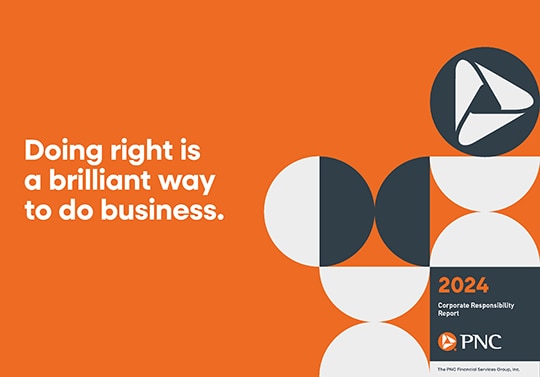
Corporate Responsibility
Our Approach to Corporate Responsibility
At PNC, our approach to corporate responsibility is rooted in the understanding that maintaining strong relationships with our stakeholders is fundamental to our success. But open and honest dialogue with our customers, employees, shareholders and communities at large, contributes to more than our success. It drives meaningful impact.

Doing Right by Our Stakeholders
PNC’s success is dependent upon our ability to create long-term value for our stakeholders.
Our steadfast focus on smart risk management and relationship-based customer service builds the foundation to engage deeply and meaningfully across our stakeholder groups.
Managing Responsibly
PNC is the bank it is today thanks to our long history of responsible business practices in service of our constituents. Our customers, employees, shareholders and communities are considered in every decision we make.

We are committed to securing the trust of our stakeholders by managing our business with integrity, transparency and accountability. A strong foundation in governance helps drive our company’s success and positive reputation. Our board of directors is committed to high ethical standards and has ultimate oversight of PNC’s strategy, including corporate responsibility issues that are material to our business.
Building a Sustainable Future
Investing in the long-term prosperity of
our communities and the environment
Additional Reports & Documents
News & Updates
Customers
Watch Out for Fraud While Holiday Shopping
The season for giving is a prime time for scams. Stay aware and vigilant.
2 min read
Communities
PNC Employee Volunteers Help Entrepreneur Win $30K Pitch Competition
PNC employees tap wealth of experience to volunteer with Sky's the Limit and help shape a small business's future
1 min video
Communities
PNC Celebrates 10 Years of Providing Mortgage Reduction for Veterans
Partnership with Military Warriors Support Foundation has helped veteran families significantly reduce debt.
2 min read





